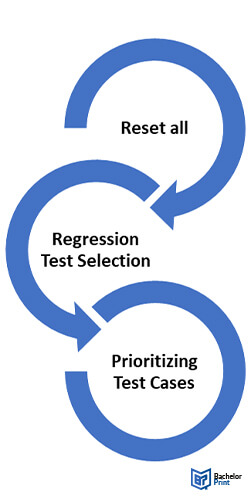
In research, the overarching aim is to derive meaningful conclusions. Furthermore, a crucial decision is made regarding the support or rejection of the null hypothesis. Central to this decision-making process is the employment of a test statistic, which will be comprehensively discussed in this article. The concept of a test statistic, despite appearing intimidating, is an integral part of research that aids in providing concrete evidence to hypotheses. Through the following discourse, we aim to demystify this concept and elucidate how it helps in shaping our understanding of data and its interpretation.
Definition: Test statistic
A test statistic is a number that describes how much the research results differ from the null hypothesis. Therefore, the test statistic is a hypothesis test that helps you determine whether to support or reject a null hypothesis in your study. You achieve this by using a test statistic to calculate the p-value of your results.
Types of test statistic
There are four primary types of test statistics used in different statistical tests. The table below summarizes the four basic types, their hypotheses, and the types of statistical tests that apply each type.
| Type | Hypotheses | Tests that use it in statistics |
| t-score | • Null: The two sets are equal • Alternative: The two sets are not equal |
Regression and t-tests |
| z-score | • Null: The two sets are equal • Alternative: Both sets are not equal |
Z-tests |
| f-score statistic | • Null: The disparities between two or more trials are greater than or equal to the distinctions between the sets • Alternative: The disparity between two or more groups is smaller than that between the sets |
ANOVA, ANCOVA, and MANOVA tests |
| X2/chi-square statistic | • Null: Two models are autonomous • Alternative: Two models are linked |
Chi-squared and non-paramedic correlation tests |
Interpreting test statistic
A statistical test helps produce a predicted distribution for a test statistic for sample size combination and various predictor variables. The test shows the probable range of scores that will occur if your figures follow the null hypothesis.
Also, the more extreme the product of your hypothesis test, the further your observations are to the edge of the range of projected test cores. Therefore, your data is less probable to be produced under the null hypothesis.
The correlation between your projected test values and the calculated test statistic is called the p-value. Therefore, a smaller p-value means that your results are less likely to occur under the null hypothesis and vice versa.
Note: The test statistic is usually calculated from the observed scores in your studies. This is why a small p-value means that your data is less probable to occur if the projected null hypothesis is factual.
Reporting test statistic
It is usually reported in the result section of a research paper. In addition to the test statistic, the section should also consist of the sample size (n), the p-value, and other elements of your data that will help put the conclusions of your study into context.
However, not all research papers need a report on the test statistic. Therefore, the type of test you want to report will determine whether you need it or not.
Below is a summary of the test types that need statistical test reporting.
| Type of Study | Type of statistic you need to report |
| Correlation and regression studies | • The reversion coefficient for each predictor variable • The p-value for each forecaster |
| Studies to determine the differences between specific groups | • Test statistic • Freedom degree • The p-value |
Test statistic example

You can use a statistical program like SPSS or Excel to calculate the p-value in your statistical test. However, you can also go the longer route of using the formulas available online.
Example: Testing the hypothesis
While testing the hypothesis, you need to follow the steps below:
- State your null hypothesis:
- Collect data in a uniquely designed way for testing the hypothesis:
- Perform the appropriate statistical test:
- Decide if you want to reject or support the null hypothesis:
Once you have completed the steps above, you can present or report your findings in the results or discussion section of your research paper.
Example: Interpretation
Example: Report
FAQs
It is a number derived from a statistical test that shows you how close your experiential scores match the distribution projected under the null hypothesis of a statistical test.
The p-value is the level of marginal significance calculated from a statistical hypothesis test that represents the probability of a specific event occurring.
P-value is a result of test statistics. For instance, a statistical test allows you to calculate the p-value that will tell you if the results of your observations support your theory or not.
It shows how close your data’s distribution matches the predicted distribution in your null hypothesis.
numerous advantages for Canadian students:
- ✓ 3D live preview of your configuration
- ✓ Free express delivery for every order
- ✓ High-quality bindings with individual embossing

